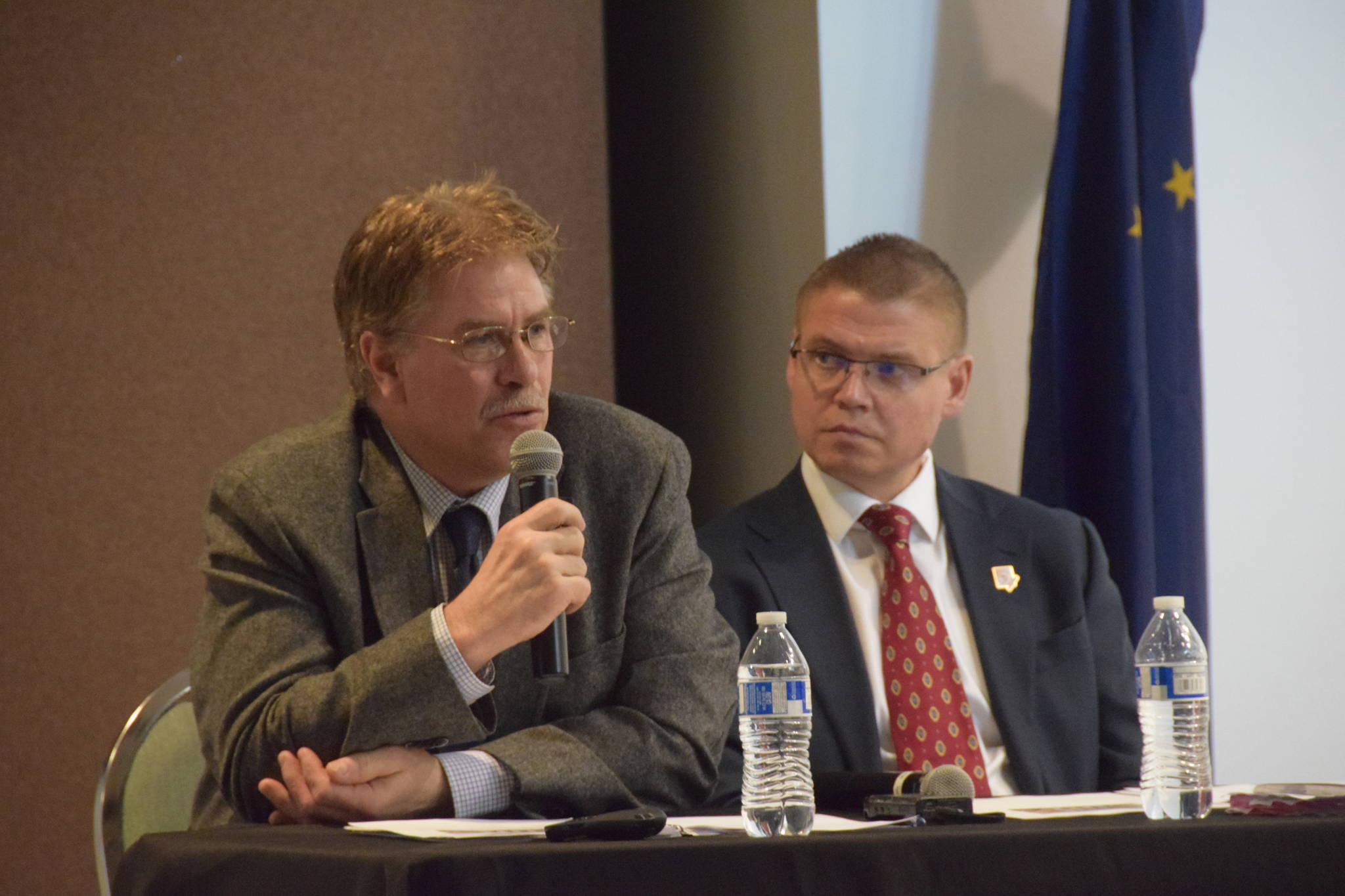During the Kenai Chamber of Commerce’s Wednesday Luncheon, Mayor Brian Gabriel and City Manager Paul Ostrander went over the current state of the city, including what the city’s budget will look like this year, trends in revenue and spending, the impacts of public services and the status of current city projects including the bluff stabilization project and the renovation of the Kenai Municipal Airport.
On bluff erosion, Ostrander explained that the bluff by Oldtown Kenai erodes at a rate of about three feet per year, which is problematic for properties currently located along the bluff and discourages new development. Ostrander said that efforts to stabilize bluff erosion will reach the next phase soon.
“This has been a top priority for the city for 30 years, and right now we’re closer than we’ve ever been,” said Ostrander.
Ostrander said that he has been working with the Army Corps of Engineers for the last two years to finalize their feasibility report and that he expects that report to be done in the next couple months.
After the feasibility report is finished the city will immediately move into the design phase, which Ostrander expects to take about a year. Since the total cost of the project is estimated to be between $30-$35 million, Ostrander said that significant federal funding will be required to cover the cost.
Ostrander indicated that Senator Lisa Murkowski and Senator Dan Sullivan have both voiced their support for the project.
“If we can get the federal funding necessary, we can move into construction as early as 2020,” said Ostrander.
Gabriel spoke about the renovations to the Kenai Municipal Airport and said that the work is scheduled to be finished on Jan. 31, 2020. The $12 million renovation includes replacing the roof, expanding baggage and passenger areas, and adding new offices for the airlines.
In terms of the economic forecast of the city, Gabriel and Ostrander were both hopeful about the future. The city does have concerns about revenue, and Ostrander noted that Capital Grants from the state stopped in 2015 and are not expected to return. Capital grants averaged about $5 million to the city prior to 2015 and were used for maintenance on roads and city buildings as well as new construction. Ostrander said that city assets depreciate in value by about $1.6 million each year, meaning that about that much needs to be spent on maintenance to prevent buildings from falling into disrepair.
Gabriel spoke to the potential economic impacts of two bills introduced to the senate by Governor Dunleavy, SB 57 and SB 63. SB 57 would eliminate a local municipality’s ability to collect property taxes from oil and gas property, and if passed would mean a loss of about $200,000 in revenue to the city. SB 63 would similarly repeal a municipality’s ability to collect business taxes from fisheries, which would equate to about $150,000 in lost tax revenue for the city of Kenai. Gabriel said that as of now he does not expect either bill to pass through the senate due to lack of support.
The city’s main sources of revenue property taxes and a sales tax. The city’s three percent sales tax accounts for 47% of the city’s revenue, and Gabriel said that this revenue has steadily increased each quarter over the last year. Property taxes make up about 25 percent of the city’s revenue, and Gabriel presented a pie chart that broke down how a $1000 property tax is distributed to all the services the city provides. One example, according to the chart, is that about 47 percent is allocated to public safety including fire and police services.
Other notable developments in the city pointed out by Gabriel and Ostrander include the city being officially recognized as a bicycle-friendly community, the completion of Kenai’s first dog park located next to Daubenspeck Family Park, and and updated version of the city’s website that will roll out on April 10 of this year.
Ostrander also encouraged Kenai residents to attend a public meeting on March 12 at 6pm at the Kenai Senior Center where people can provide input on the city’s 2020 budget.

